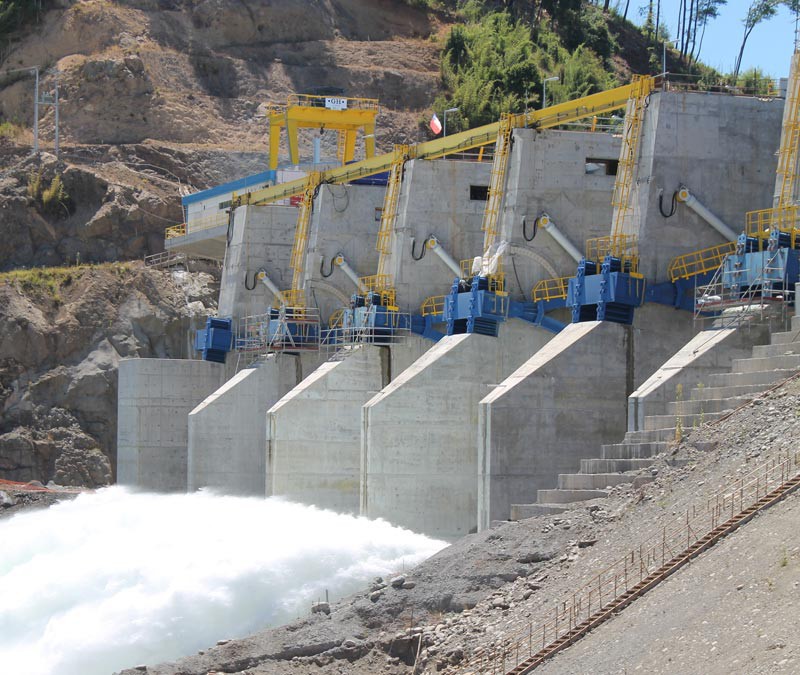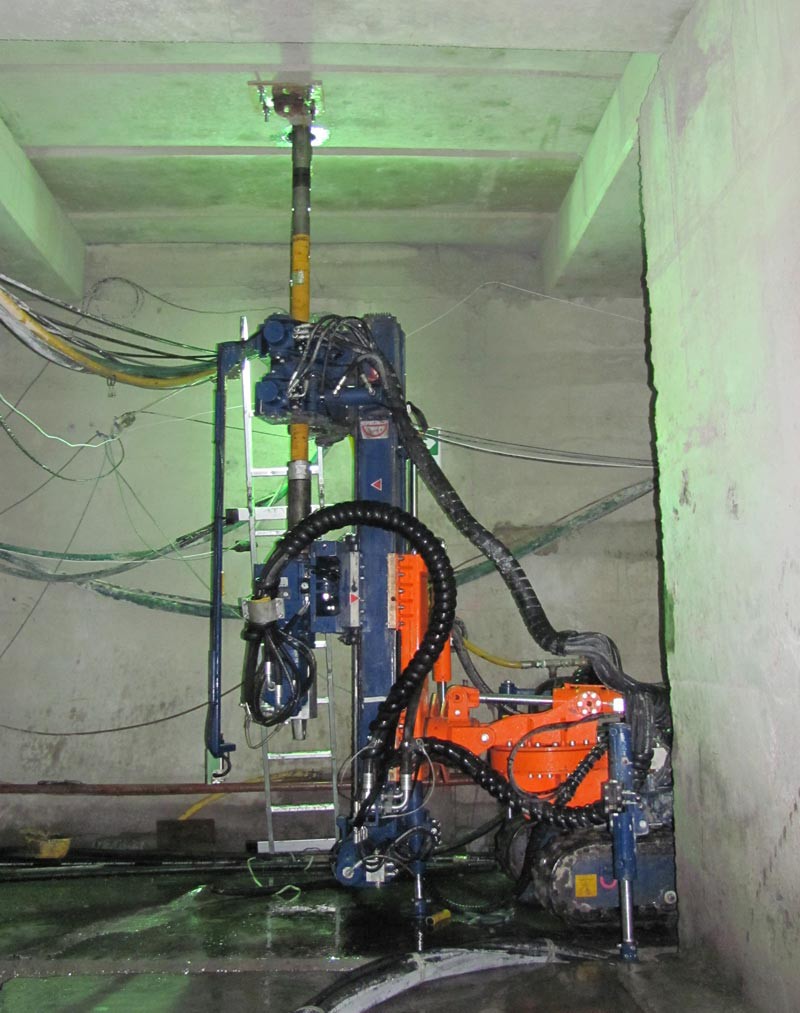DATE: 2010-2014
MODEL: MC 3D
The Angostura Hydro Electric Power Plant is one of the major hydroelectric projects carried out in the country in the past decade.

The construction project was awarded to the Italian group Salini-Impregilo for a total amount of 240 million Euro. Construction began in February 2010. The main civil works included the construction of an earth dam approximately 1.6 km long and 25 meters high on the left bank of the river and the construction of a RCC (Roller-Compacted Concrete) dam 125 m long and 63 m high with a spillway incorporated along the Bío-Bío River.
Although the bedrock formed of sedimentary rock offered good conditions for placing a dam on it, the project requirements included waterproofing of the dam body by means drilling and grouting with cement. The drilling operations were also aimed to identifying and securing any weak or permeable zones along the dam structure.
The Chilean foundation contractor Pilotes Terratest S.A. was in charge of the execution of all the drilling works, including injections and waterproofing, consolidation, drainages and instrumentation installation (piezometers and inverted pendulum).
“Some of the works were performed opencast”, says Alberto Mukden, Production Manager at Pilotes Terratest, “but the majority of them was carried out underground, and involved the diversion tunnel, outlet tunnel, the dam, the drainage gallery, headrace tunnels, discharge tunnels, turbine hall and access galleries to the turbine hall.”

Water-proofing of the bedrock was done by drilling 64 mm holes and then grouting with cement for a total of 7,018 drilling meters. Part of the drilling took place in cramped galleries, with very limited free space to operate on above the drill rig. Drill tubes as short as 1 meter had to be used, making straight drilling particularly difficult.
“The drilling needed for waterproofing of the bedrock was performed using an innovative technique” - explains Alberto Mukden - “We implemented for the first time a rotary-percussive drilling system with hydraulically driven DTH hammer developed by Wassara. The advantage of this system is that no compressed air is required, thus there is no harmful noise in the working place, the hydraulic power pumped to the hammer has practically no loss and there is a better control over borehole deviation.”
The allowed borehole deviation was set to 2% at full length (up to 60 m). We are proud to say that this requirement was met by far, despite the extreme low headroom and the 1.2 m free stroke length. Also, the use of water-powered drilling offered a considerable reduction of the noise level, resulting in a healthy, dust-free and comfortable drilling environment for all the people working inside the galleries”.
“The other major advantage of this system is the great productivity: we managed to improve the production ratios up to 20% as compared to the traditional systems using compressed air”.
The Wassara system was also used for the drainages with 102 mm drilling along the dam body and along the galleries that surround the turbine hall.
The drilling operations were very extensive and included among the rest
• 4,665 m if rotary-percussive drainage drilling, 100 mm drilling diameter
• 1,429 m with 15 m length “upwards” and 2,336 m with 45 m average length “downwards” drilling
• 1,484 m rotary-percussive drilling for consolidation works with 64 mm drilling diameter
• 7,018 m rotary-percussive drilling for waterproofing with 64 mm drilling diameter
• 853 m of diamond drilling with HQ3 system
• 712 m rotary-percussive drilling for the installation of piezometers
The project took 22 months to complete, working on day and night shifts. Since its launch the hydroelectric plant has become an essential generation contributor to Central Interconnection System (system that spreads from Taltal to Chiloe and concentrates 92% of the population), covering about 3.3% of this system’s demand.